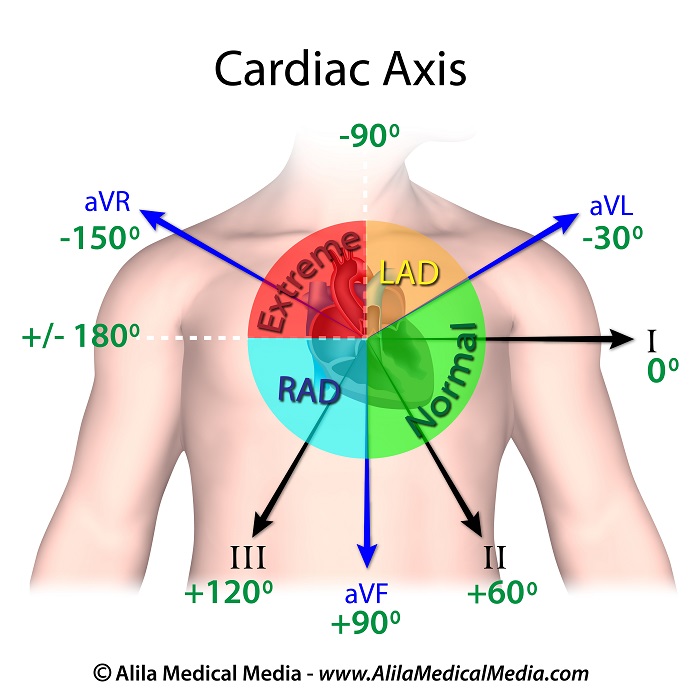Cardiac (QRS) Axis Explained Clearly
Cardiac axis explained in 4 min - It's mind-boggling how easy it is!
This lesson includes an animated video lecture, downloadable images, quiz questions and a PDF
Cardiac axis is the net direction of electrical activity during depolarization.
In a healthy heart, the net movement is downward and slightly left. This axis is altered, or deviated, in certain conditions. For example, in left ventricular hypertrophy the axis is skewed further left; while right ventricular hypertrophy results in a deviation to the right.
Cardiac axis can be determined by examining the 6 limb leads, which look at the heart from different angles in a vertical plane.
The QRS axis is the most important, and also the easiest to be determined, as it represents ventricular depolarization.
The QRS axis is considered:
- normal when it is between -30 and +90 degrees.
- Left axis deviation is between -30 and -90 degrees.
- Right axis deviation goes between +90 and +180 degrees.
- The rest is known as northwest axis or extreme axis deviation.
Subscribe to one of the courses below to continue!
This content is available within the following courses:

Our Signature Animated Videos on Electrocardiography: 25 animations, plus downloadable PDFs, downloadable images, and quizzes.

Our Signature Animated Videos on Electrocardiography: 25 animations, plus downloadable PDFs, downloadable images, and quizzes.